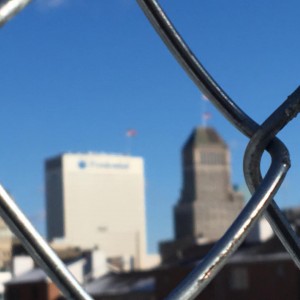Attica Prison Powder Keg
On September 9, 1971, prisoners in Attica, New York, rebelled. Various factors—viewed as “disciplinary measures” by authorities—contributed to the prison riot.1, 2
This list exhibits just a few of them:
- Overcrowding bred frustration because Attica, designed for 1,600 inmates, had exceeded its capacity.
- Unhygienic conditions included one shower, either weekly or bi-weekly. Additionally, inmates received one role of toilet paper per month. Furthermore, prison toilets were holes in the floor.
- Physical brutality.
- Solitary confinement routinely exposed prisoners to stripped cells where they slept naked on a concrete floor.
- Racism permeated the atmosphere. Indeed, an all-white staff exercised authority over a population of more than 60 percent Black and Latino inmates.
- The War on Drugs, declared by President Richard Milhous Nixon about two months before the riot, specifically targeted African-Americans.
A Spark to Ignite the Powder Keg
 The Attica Prison Uprising began as a scuffle between two prisoners, Ray Lamorie and Leroy Dewer, on September 8, 1971. The incident involved racial dimensions because one man was Caucasian and the other was Black. Later that night, prison guards forced both men from their cells. Consequently, the corrections officers put the men in solitary confinement.1, 2
The Attica Prison Uprising began as a scuffle between two prisoners, Ray Lamorie and Leroy Dewer, on September 8, 1971. The incident involved racial dimensions because one man was Caucasian and the other was Black. Later that night, prison guards forced both men from their cells. Consequently, the corrections officers put the men in solitary confinement.1, 2
“These guys were being beaten through the halls,” recalled Albert Victory, a former prisoner. “That’s the way it was done. Men just couldn’t take it anymore,” Victory said.1 Indeed, authorities locked one prisoner in his cell after he threw a soup can at a guard over these beatings. But an oversight enabled other prisoners to free him for breakfast.
Attica Prison Uprising
When guards arrived to punish the prisoner on orders from Mancusi, the powder-keg exploded.1 Subsequently, about 1,200 inmates took over a quarter of the prison, and 40 hostages.3 After gaining control of Attica and addressing the needs of the wounded, the prisoners proceeded to negotiate for improvements.2, 4 The negotiations consisted of:
- Complete amnesty and no reprisals for the uprising
- Transportation to a non-imperialist country
- Political freedom
- The right to communicate with anyone
- Ending censorship of reading materials
- Coverage by state minimum wage laws
- Religious freedom
- Competent medical care
- Better diets
- Increased recreation
- Decreased cell time
- Realistic rehabilitation
But on September 11, a few nights after the Attica Prison uprising began, Corrections Officer William Quinn succumbed to injuries. Therefore, Governor Nelson Rockefeller refused to participate in negotiations. Additionally, he refused to grant amnesty.1
Returning to “Normal”
Thus, the Attica Prison Uprising ended September 13. By the time is was over, ten guards and 29 inmates had died in a firestorm of ammunition that lasted several minutes. Furthermore, autopsies confirmed all the men died from bullet wounds.1, 3
Consequently, government authorities stripped the prisoners naked, and lead them past belligerent, angry guards who beat the passing inmates. A dearth of transportation meant most of the injured were treated at the prison hospital. Additionally, a shortage of medical supplies rendered the treatment substandard.1
It began ugly. And it ended very ugly for those directly involved. Meanwhile, the aftermath included government investigations that eventually lead to prison system reforms.
Questions to Consider
- What prevented the government from determining congruence and proportionality as between the Attica prisoners’ just deserts and punishment actually received?
- When punishments exceed desert, what is a prisoner’s recourse?
- What level of prison oversight would have prevented conditions like those at Attica that lead to the riot?
- Did the government plan the operation to regain control of Attica Prison include measures to minimize injuries and casualties? What tactical and strategic measures should the government forces have considered?
1 Asha Bandele, After the Attica Uprising, The Nation, Sept. 9, 2011, www.thenation.com/article/163270/after-attica-uprising (last visited Jan. 16, 2017)
2 The Attica Prison Uprising: Forty Years Later, youtu.be/cBG1UkxrMG0 (“Uprising”) (last visited Jan. 16, 2017).
3 George Hodak, Sept. 9, 1971: Attica Prison Revolt Begins, Aug. 31, 2011, ABA Journal, www.abajournal.com/magazine/article/sept._9_1971_attica_prison_revolt_begins/ (last visited Jan. 16, 2017).
4 Tad Crawford, A Memory of Attica on the Fortieth Anniversary of the Prison Revolt, Guernica, Sept. 15, 2011, www.guernicamag.com/daily/tad_crawford_a_memory_of_attic/ (last visited Dec. 4, 2012);
For similar articles, please view The Emancipation Proclamation Signed By Pres. Lincoln Dateline Jan. 1, 1863 and The Thirteenth Amendment and Modern Slavery.
Gloucester County Criminal Defense Attorney Michael Smolensky, Esquire, knows how to protect his clients. Mr. Smolensky can provide consultations on all cases that involve Prison and I.S.P.. Call Now—(856) 812-0321.